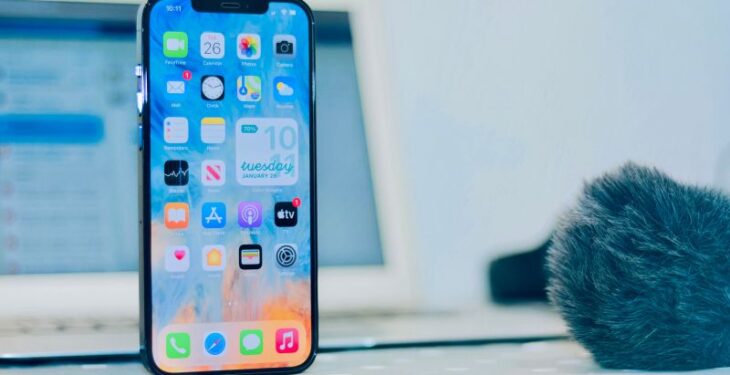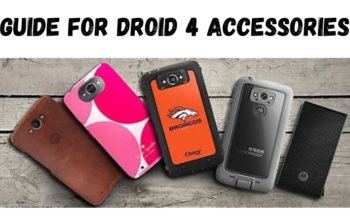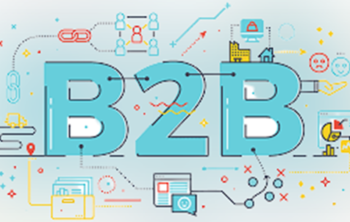The weather app that indicates the rain and snow alerts on your iPhone is not for fun; it’s useful for knowing the present state of the weather in your location and the predictions for subsequent days. It’s good to know the weather conditions so you can plan your day accordingly. The weather app also gives you the present conditions of any other city or country you wish to visit, so you can know if you need to grab your raincoat, snow coat, or umbrella.
The weather app just got better on the iPhone, such that iPhone users can now get notifications to know when the rain or snow are both going to start and stop in their location; this is just a way to avoid getting stuck in the rain or snow as you go about your daily activities like going out for a meeting or ordering food or grocery. The essence of these weather notifications is to keep you abreast of the current weather conditions in your location so you can plan properly ahead of time.
To know how to set up the rain and snow alerts on your iPhone so you to start receiving notifications for the rain and snow in your location or your proposed destination, carefully read through the article below as you scroll down the paragraphs.
Guidelines for setting up rain and snow alerts on your iPhone
This weather app feature is peculiar to the iOS 15 and iPhone 13 models, meaning that your phone must run iOS 15 or above to get these weather alerts.
To get rain and snow alerts on your iPhone, you need to turn on the location services on your iPhone before it can work. How then do you turn on your location on your iPhone;
Step 1: Open your iPhone’s Settings app.
Step 2: Select the “Privacy” option from the menu displayed
Step 3: Click on ‘Location Services’ and change the toggle to the “ON” position.
Follow the procedures below step-by-step to start receiving alerts on your iPhone;
Step 1: Open your iPhone’s Settings app.
Step 2: Select the Notifications option from the menu displayed.
Step 3: Scroll down and click on the “weather” option from the notification list.
Step 4: Click on the Weather Notification button from the menu displayed on the screen.
Step 5: Change the toggle for “My Location” to the “ON” position to set up rain and snow alerts for your current location. Suppose there are other saved locations in the weather app. In that case, you can also turn on notifications for these places to keep you updated.
With this feature enabled on your iPhone, you will get direct notifications to your iPhone with messages like “Light Rain Soon,” “Heavy Rain Soon,” or “Snow Soon,” with an expected start and stop time for the weather.
You can also change the toggle for the weather notifications for specific locations you wish to visit to enable you to get rain and snow updates. Assuming your iPhone weather app has automatic location access, it can easily detect a change in a location such that the weather update changes as you travel from one location to another.
Apart from navigating your way through the settings app, there’s another easier way to set up the rain and snow alerts on your iPhone.
Step 1: Open your iPhone’s weather app.
Step 2: Click on the button with three dotted horizontal lines at the bottom-right side of the screen.
Step 3: A menu list is displayed; click on ‘Notifications.’
Step 4: Click on the rain and snow alerts and turn on your location.
However, both options above can set up rain and snow alerts on your iPhone depending on when you want to start receiving notifications on the weather app and which one you find easier to navigate between the two.
(Optional) If you wish to add another city or country to your weather app, open the weather app, click on the three horizontal lines displayed at the bottom-right side of the screen, search for the city to add, and click on add.
For the added city or country, you can either turn on the notifications to receive the rain and snow alerts in those places or leave it turned off until you need it, but it won’t automatically show notifications until it is enabled.
Suppose you want to stop receiving weather app notifications for rain or snow. In that case, it is the same procedure that you would use. Still, this time you’ll turn off your location and notifications instead of turning them on to receive weather alerts.
Note: Not all iPhones have these special weather app features, so people who have the earlier iOS versions may not see this aspect of the weather app on their devices.
Why Your iPhone Isn’t Sending You Notifications Regarding the Weather after Set Up
Only users in Ireland, the United Kingdom, and the United States are able to get updates from Apple’s Weather app about weather like rain and snow. You won’t get the weather notifications if either you aren’t in one of these countries or your selected location isn’t in one of these countries.
If you are not on iOS 15, you also won’t be able to view this brand-new feature. Be sure to upgrade your iPhone’s operating system to the most recent version available.
In conclusion, the Weather app will not function properly if you do not let it always have access to your location.
How to Disable the Most Recent Weather Alerts from Being Received on Your iPhone
After turning on notifications for weather within the next hour, you will be notified whenever it is about to start raining or snowing. This applies not just to the place you are now in but also to any other locations for which you have activated these notifications. On the event that you get an excessive number of messages, you may disable weather alerts in iOS 15 by following these steps:
- Launch the Weather app, then choose the bullet list icon located in the app’s lower right corner.
- Tap the symbol with the three dots, and then choose Notifications.
- Make sure that the menu bar for My Locations and any additional locations that are shown here are turned off.
- To finish, press the Done button.
You will no longer get notifications about snow or rain falling. Because your iPhone will no longer need to continuously access your location or transmit alerts that cause the screen to light up, your battery life may even be extended as a result of turning this feature off.
Alternatively, if you remove a location from your list of locations in the Weather app, you will no longer get updates about the following hour’s precipitation for that specific area.
You can also disable all alerts from the Weather app by going to Settings > Notifications > Weather on your device and turning off the Allow Notifications switch.
Get Updates on the Weather So You Can Plan Your Day
The iOS Weather app allows you to get up-to-date alerts about precipitation types such as rain, snow, hail, and sleet in the following ways: After Apple’s acquisition of the Dark Sky app in 2020, the built-in Weather app now includes these capabilities, which were previously unavailable. However, if you’re still not satisfied with Apple’s default Weather app, the App Store offers a wide variety of third-party weather applications to choose from.
Conclusion
The iOS 15 and iPhone 13 models have these special features in their weather apps that indicate when it will rain or snow and when it starts and stops. With this feature, you can turn on your location and the notifications to keep you updated on the current weather conditions in your location and the weather predictions for your location.
To set up the rain and snow alerts on your iPhone, open the settings app and turn on your location to enable you to see the notifications. Next, click on the weather app and turn on notifications to get rain and snow alerts in your current location. Enabling these notifications will keep you updated on the present weather conditions in your location.






